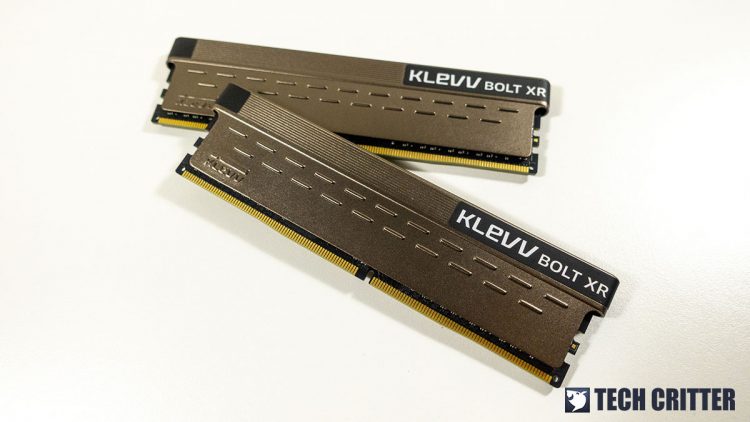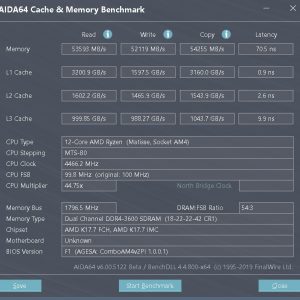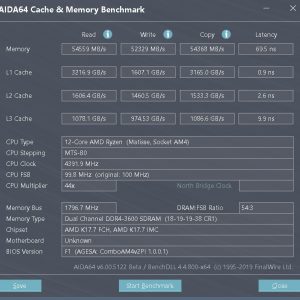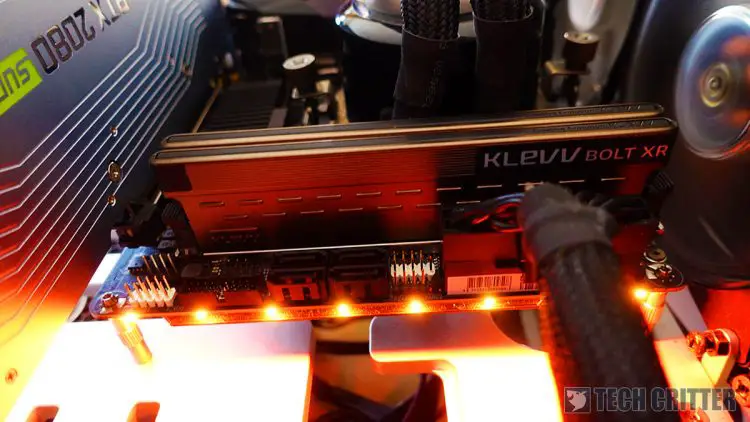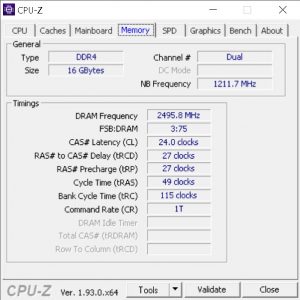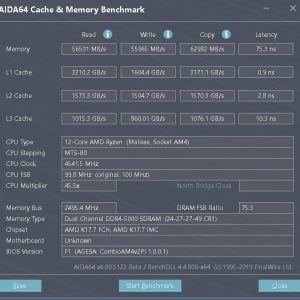Memory overclocking has always been one of my personal favorite thing to do whenever we get our hands on a new CPU or motherboard and knowing that KLEVV will be sending in their new CRAS XR RGB and BOLT XR DDR4 memory kits got me excited for real. So today, our objective here is to dial in some simple overclocking settings and see how well the new KLEVV BOLT XR holds up. Your mileage will definitely vary, but it gives us a pretty good idea of what the KLEVV BOLT XR is capable of doing.
Knowing KLEVV’s track record, the previous memory kit with Hynix CJR die was one of the better affordable memory kits that can overclock surprisingly well. Despite its not so impressive timings of CL18-22-22-42 for DDR4-3600, it’s using the new Hynix DJR die which is known to clock even better than the CJR got my expectation rather high for the BOLT XR.
As I have already achieved my primary target of getting a DDR4-5000 on an Intel-based system and have yet to achieve any similar results on an AMD-based system, I decided to use the AMD Ryzen 9 3900X and Gigabyte B550i AORUS PRO AX as the main components for my test this time.
Going beyond XMP profile speed?
Not feeling that adventurous? Well, DDR4-3600 is fine, really. But does it worth the effort? Honestly, there’s hardly any effort – not as of now, at least. Just so you know, the only adjustment done here for the initial test is on the primary timings ONLY.
I started the test with DDR4-3600 but at a slightly tighter timing at CL18-19-19-38, FCLK set to 1800, then a total of 24 instances of HCI and let it run until 400% – the usual baseline that I use to determine if the system is stable enough for daily or long hours usage.
Not much to my surprise, the system did manage to complete 400% on all HCI instances without any signs of error. The 1ns difference doesn’t seem a lot to some but if you’re running a benchmark and have a score to beat, every small fraction of seconds counts.
Going DDR4-5000
As I’ve mentioned earlier, I have my hopes high on the BOLT XR with Hynix DJR ICs to achieve the DDR4-5000 goal on an AMD-based system. This does take a bit more time and effort but I did end up achieving the target frequency after running into a number of errors during the HCI test.
In case if you’re interested to know, CL24-27-27-49 is the only setting that allows the system to post and 1.68V VDimm is required to ensure the system will run stable and survive at least 400% on that 24 instances of HCI which I’m using to gauge the system stability. It’s definitely not something you’ll want for your daily driver – the extremely loose timings and high VDimm especially, as it’s only meant for running benchmarks for just a short moment.
Closing Thoughts
While it’s true that the timings aren’t as great as those highly-endorsed kits that use Samsung B-die ICs, the fact that these good memory kit that offers plenty of overclocking headroom will usually cost more than the average budget memory kits. Of course, you can always go for the best kit available if you have plenty of budgets to spend on getting started with memory overclocking, but that’s not exactly the case for everyone.
The KLEVV BOLT XR is currently one of the very few budget memory kits that fall on the sweet spot between price and performance, which I personally recommend giving it a try if you just getting started with memory overclocking – you definitely won’t be disappointed.


